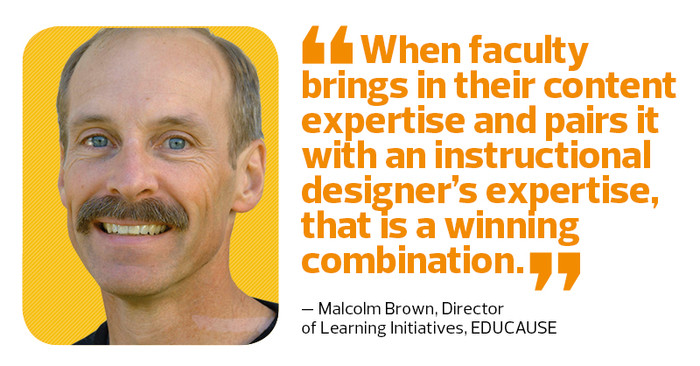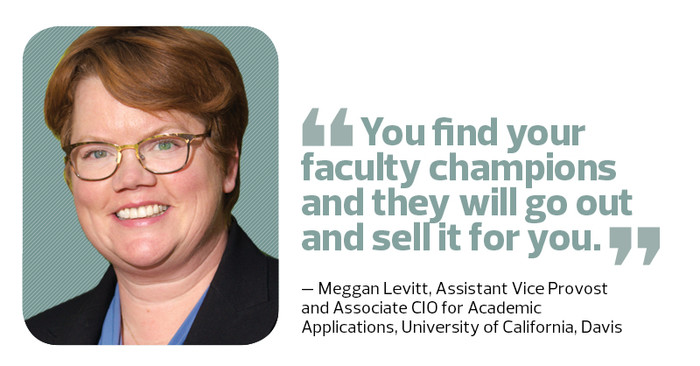LEVITT: We see a lot of classroom technology adoption in the early undergraduate space. It’s helping to solve issues of engagement in large classes. There is still room for figuring out its application in higher-level courses and thinking through how we work technology into lab environments.
HASELEY: The challenge is getting people to see that teaching is a challenge because people have taught the same way for a long time. If it worked in the past, it will work in the future. Why change?
We are moving away from that and moving toward student-centered learning and learning experience design. It’s a shift from “the sage on the stage” to focusing on the students’ perspectives.
EDTECH: What challenges do colleges face related to classroom technology?
LEVITT: From a student perspective, it’s the wireless infrastructure. Students bring more than one device, so you have bandwidth issues. Faculty increasingly wants to do more active-learning activities and use technology. But if you have a large class of 300 students getting on the same handful of access points, that is an inhibitor.
As it relates to issues of inequity, who is bringing devices to campus? Some students have devices and some don’t. Not only that, if faculty members use a particular tool in class, such as an online discussion board where students have to engage with a vendor separately, then it needs to be identified as course material for students to be able to use financial aid to pay for it.
BROWN: Cost is always going to be a factor. Classrooms are an expensive infrastructure. All classrooms need some sort of projector in them.
They need Wi-Fi. They need a controller board for changing the lighting setting and raising screens and controlling other technologies. You need staff that knows how to implement and maintain it.
HASELEY: One of the largest challenges is resistance to change. People often see it as another thing in their workload.
The other challenge is faculty and students are often not incorporated in the technology selection process.
Or a particular faculty member is outspoken, and then the technology gets scaled without questioning its applicability to other things.
EDTECH: How can campus leaders ensure that classroom investments pay off?
HASELEY: Often, when the demand for technology comes from students, faculty will react better than if they are told from above to do something. I believe faculty want to be great teachers and do the best for their students. If students say, “We love this and it helps our learning,” faculty are more likely to listen.
BROWN: You invest in developing your faculty so that you enable them to learn about various pedagogical designs and learning engagement strategies and approaches. That will make the most of these types of rooms.












